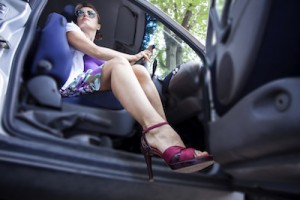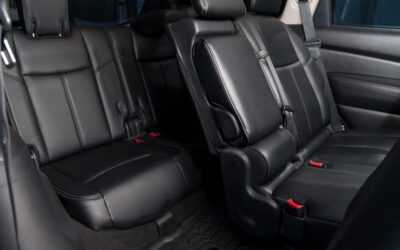It seems an unlikely mix, but in recent years the worlds of fashion and road safety have begun to combine with the development of specific shoes for driving. Choosing the right footwear for driving is imperative from both comfort and safety perspectives. A poll by uSwitch in 2015, found that more than eight out of 10 drivers, 82%, believed that their choice of footwear could affect their safety whilst driving, and one in 10, 12%, admitted they have stalled a car because their shoes were difficult to drive in. The survey also uncovered that 35% of people had experienced some sort of driving mishap in the last year due to the shoes they were wearing.
Does it matter what driving shoes you wear?
The answer is simple – yes. When you wear the correct sort of shoes for driving your feet are more relaxed, you are more in control of the pedals, and your driving actually improves and is safer. Your feet and ankles bear the brunt of pedal use and your ankles will be flexing almost continuously while you drive.
Is it illegal to drive in flip-flops?
No, it isn’t actually illegal but flip-flops are a very poor choice, nevertheless. They are flimsy and likely to bend underneath your foot, either meaning that your ability to reach the pedals properly is impaired or they can actually become trapped underneath the pedals leading to a very dangerous situation.
What are the worst kind of shoes for driving?
Along with flip-flops, shoes with a high heel or thick sole are bad choices. Combine these two elements together and wedges are just about the worst choice you could make. The heel of your foot needs to be flat against the floor to create the right pedal action.  If you’re wearing high heels then you can’t judge the correct height and therefore cannot be certain that you’re applying the right pressure. Not only that, but you’ll also scuff the back of your beautiful heels making it a fashion risk too!
If you’re wearing high heels then you can’t judge the correct height and therefore cannot be certain that you’re applying the right pressure. Not only that, but you’ll also scuff the back of your beautiful heels making it a fashion risk too!
The thickness of the soles and height of the heels are crucial elements in driving shoes. If they’re too thick then you can’t feel the pedals properly. This leads to uncertainty as to how much pressure to apply and can result in uncertain, jerky movements, plus you’re at far more risk of stalling the engine and creating a potentially dangerous situation.
Another thing to avoid is very wide-soled shoes. The pedals in a car tend not to be particularly wide and if your shoes are then you’re at risk of pressing two pedals at once which could be disastrous for both you and other road users.
What are the best shoes for driving?
The very best type of shoe for driving is a thin-soled, soft, moccasin style of shoe. There are many options which have been developed specifically for driving, however any shoe of this type is likely to be a good choice. The softness means that they’re flexible and can accommodate your feet and ankles as they move with the pedals. They also have a thin sole, equal from the heel to the toe so you’re able to accurately judge the correct pressure to apply.
Wearing the wrong type of shoes while driving can have serious safety implications, so even if you don’t want to wear your driving shoes all day – it’s worth investing in a pair to keep in the car specifically for driving.
It’s the simple things like this that’ll make settling into driving easier. Keep an eye on our blog for more tips and find out more about your insurance options, especially if you’re new to driving.



